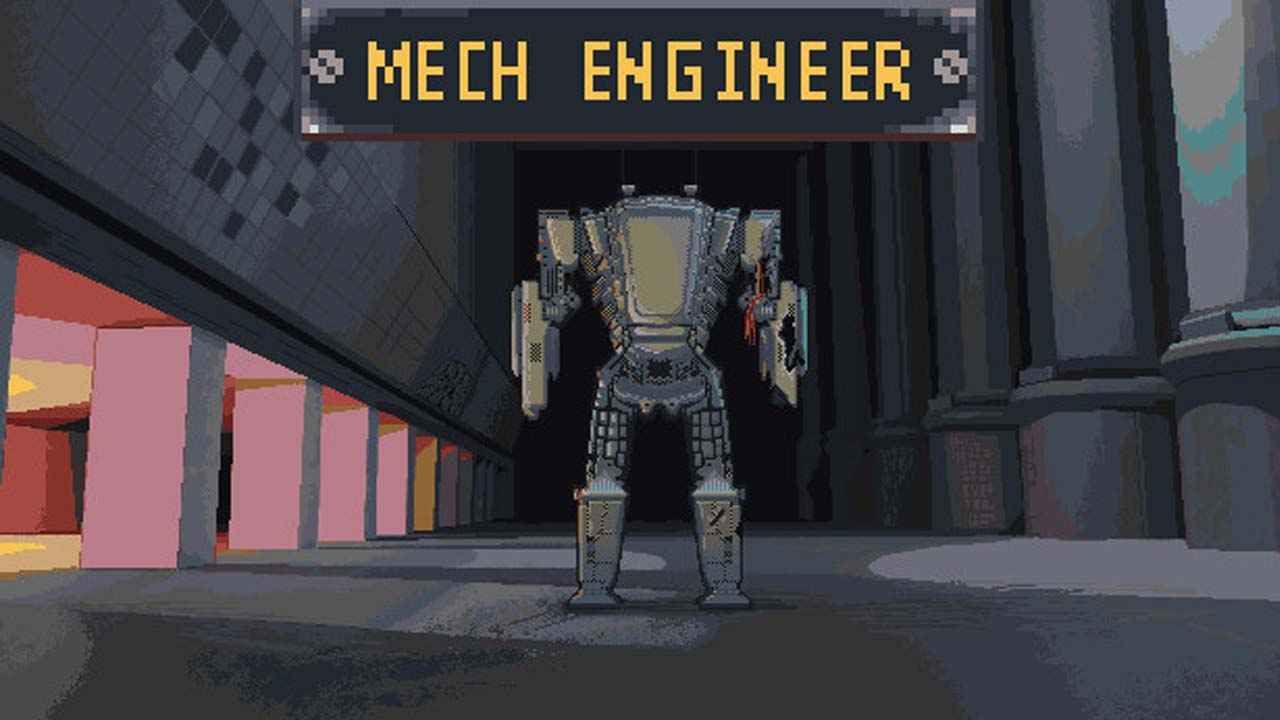A run down of available auxiliary slots in game, their uses, and pitfalls.
Introduction to Auxiliary Modules
Auxiliary modules can often be over looked or, confusing to some newer players. These modules modify the basic status of your mech to correct a deficiency or add functionality. Each mech in the game has a number of auxiliary slots, some with many, and others with very few. Its your job to figure out how to best leverage their functionality with your design.
The modules and what they do:
Ammo Module
Increases ammunition & control by 1.
Battery Module
Grants +15% total energy based on reactor output. So higher power reactors benefit more from this module.
Evasion Module
+25% Evasion rating & +25% stability regeneration. Great for rough terrain or melee builds.
Turbine Module
Adds 3 additional weight to your mech, as well drains 3 energy. Grants 15 water resistance, 2 oxygen, and +35% underwater speed. For underwater battles this is mandatory depending upon the mech.
Metal Grid Module
+10% Maximum mech hit points & safety (for the pilot), -10% to base weight.
Torpedos Module
Grants guidance to explosive ordinance underwater.
Capacitor Module
Grants 25% Shot heat reduction.
Heat Sink Module
Grants +4% cooling power, at the cost of 3 additional mech weight.
Armor Module
Grants +1 armor, and 15 impact resistance at the cost of 1 additional mech weight.
Repair Drone Module
Allows pilots with the Drone repair perk to repair nearby mechs during combat.
Shield Module
Grants +5% shield power and does energy damage based upon shield power to enemies that contact the shield.
C-RAM Module
Grants point defense, allowing the equipped mech to shoot down enemy missiles. Uses ammo and must reload after triggering.
Needle Bullets Module
Allows kinetic projectiles such as bullets to fire underwater without a speed and range penalty.
When or when not to use specific auxiliary modules when designing a mech:
First I need to stress the need to really consider the purpose of the mech and it’s overall design before plugging in an auxiliary module. Sometimes a well used aux slot can tip the scales from a bad design to a perfect one. As you unlock newer mech designs auxiliary slots may decrease limiting your options so considerable thought should be used to balance your designs.
Example Scenarios
A great example is a mech design that suffers from over heating. The problem may be related to environmental heat, or generated heat such as in shots. Before relying on one of your precious few auxiliary slots to mitigate or resolve this problem first consider the reactors design, the environment the mech is expected to operate, and it’s currently equipped weapons. Sometimes modifying the reactor design can help or resolve this issue, other times you may want to switch up your weapon load out. When it comes to auxiliaries such as the capacitor and heat sink they are very specific in their use.
For example lets say you have a reactor designed around reducing heat generated through shooting. Then in that case you may want to use heat sinks to offset the environment heat load, or if your design is really heavy in shot heat build up then additional capacitors. The real use of heat sinks and capacitors is longevity of engagement with the enemy. Every time your mech shuts down to cool off they become vulnerable to enemy attacks. While pilots can get perks to mitigate this as well overclocking cooling can sometimes help but, the issue of being vulnerable still persists. The point I’m trying to make here is auxiliary slots aren’t intended to completely resolve issues, but offset them. Although you can get lucky depending upon your design to achieve equilibrium effectively resolving an issue so keep your eyes open for that.
Another example is that of the mandatory auxiliary module like in aquatic environments. Few mechs are designed with aquatic engagements in mind, however with the use of specific modules a non-aquatic mech can become useful underwater. For non-aquatic mechs the turbine module is mandatory for movement and survivability. Depending upon your weapon load-out the needle bullet or torpedo modules may be required. Even aquatic mechs will require either needle bullets or torpedo modules depending upon their weapon load out so keep that in mind. Just because the mech is aquatic doesn’t mean it’s weapon load out is!
Battery modules are a common occurrence in mech designs particularly with energy weapon builds. The more power a reactor generates the more useful battery modules are so keep that in mind. As the game progresses you may encounter energy weapons, weapon system that benefit from extra energy input, and larger variants of weapon systems that require additional power.
Niche auxiliary load outs.
Depending upon your mech build you may want to equip a mech as a support rather than a front line assault unit. Mechs that have a lot of auxiliary slots are perfect for such a purpose. In support mechs its common to see modules such as C-RAM, repair drone modules, and shield modules to protect other nearby mechs. Support mechs aren’t design to dish out damage, but more to deal with low tier enemies letting the other mechs dish out terrible damage on specific enemies or bosses.
Words of wisdom
It can be really difficult striking the right balance of functionality and long term use on a mech. When juggling various environments it can be daunting to constantly alter mechs to fit a combat environment or plug a gap in your assault team. In such cases it can be of use to outfit a few mechs in your assault teams with some support modules instead of dedicating a mech specifically for that purpose, thus spreading out support throughout your team in case one of your mechs goes down. Redundancy is a good thing!
Its very common to be in a production crunch when outfitting a mech, sometimes a well placed auxiliary module can tip a design just enough in the right direction to get it to work well enough until production can catch up with your needs.
Before completely ignoring some modules in favor of more common use ones, consider their potential use. For example evasion modules help a lot early game with traversing difficult terrain with early mechs. Also when newer enemies begin to show up on the calendar consider increasing the survival of your mechs with armor or metal grid modules. Sometimes it pays to be a little cautious when encountering a new foe for the first time.
Ammo modules are great, if used effectively. If you’re wise you might treat miniguns as more of a “if it sits, its fits” kind of gun. That is to say just because you unlocked a laser or two doesn’t mean you should completely swap over to the new weapon system. Each weapon system has a creative use, and when kinetic weapon systems such as cannons, miniguns, and railguns are paired with ammo modules they can really dial up the damage potential.
When designing a mech don’t just consider flat damage as the pinnacle achievement, consider sustained damage and longevity.
To kludge or not to kludge, that is the question.
In the previous section I went over the basics of auxiliary modules and their uses. Now let’s outline how they can foil your designs.
Guns like bullets!
ANY WEAPON that has ammo benefits from ammo modules, not just kinetic weapons like miniguns, cannons, and railguns. Missiles, plasma, and even chemical weapons benefit from such modules. So always be mindful of the description of a module and its potential application.
I never use these modules, and think they’re useless.
WRONG! While some modules might not be immediately helpful depending upon your build, they grant flexibility. Some players may never touch evasion, armor, or metal grid modules in favor of something else. Yet that doesn’t mean the best choice is being made. I understand the allure to standardize your mech designs, but that’s a pitfall the game lures you into so you fail. Mech Engineer isn’t a game that holds your hand, nor does it pity you. It wants to crush you, and your terrible design choices.
Even with auxiliary modules my design doesn’t work.
I get it, I’ve been there myself, and yeah it can be rough. Sometimes the best option is to strip the mech and start over. Yeah it can suck going back to the drawing board, but sometimes its for the best. Don’t be afraid of not min/maxing your weapon systems, they don’t need to be perfect. If you find yourself constantly trying to maximize damage out of a weapon and then somehow fit that into the mech you got it backwards. Instead understand the limitations of your mech, and work with that. You may find the experience more rewarding in the long run. Design from the ground up, not the other way around.
Not enough auxiliary slots!
To this I have to say, I’m right there with you pal! But figuring out how to make the design work is part of the fun and challenge. The best way to perceive auxiliary slots is that of a bonus, and not part of the core design. If you start designing your mechs with that in mind you’ll find your use of the slots much more flexible than they were before.
I always end up using heat sinks and capacitors!
Sounds like a you problem…
Seriously though I get it. The allure of doing an all energy build or ramping up a weapon system to waffling degrees can be seductively tempting. Don’t do it though. Sure sometimes you can find that illusive sweet spot and everything just clicks, but usually that won’t happen. In such cases when designing your mech purposely give yourself some wiggle room in the heat department. Heat related modules are best used to slightly offset heat and its build up, not completely resolve it. Having said that when you slap on a heat sink and your heat problems magically vanish is a delightful feeling.
My mechs act wierd in swamps and deserts!
Evasion modules! Seriously the stability bonus is nothing to ignore. Mech designs for difficult terrain can be a bit tedious, but it can really pay to design with the environment in mind. What if you needed to enter contaminated areas, fight a boss, or deal with a bunch of new enemies on the calendar? Being able to maneuver freely is survival, consider your mechs, and your modules!
The bugs started charging and shooting back at me!
Ah yup, they tend to do that every so often. A great way to mitigate damage from such a situation is the armor and metal grid modules. Specifically the armor modules helps with this. The bug that likes to charge can really jack of a mech’s armor so giving it a little extra in the form of a auxiliary module can help in the early game when armor is cost and time prohibitive.
My pilot drowned and now I’m sad.
Turbines and metal grid modules help with that. turns out added safety and oxygen gives your pilot a little extra wiggle room before their hull gets breached and they either implode or drown.
My drones aren’t repairing my mechs, what gives?!
Your pilot requires the prerequisite drone perk to make use of the drone. Not to be confused with the commander perk that boosts them, as that perk doesn’t allow drone use, but boost those that can use drones.
C-RAM doesn’t do much…
C-RAM is great, more is better. If your up against enemies that are going to launch missiles at your mechs outfitting the whole team with C-RAM isn’t a bad idea if you don’t want to pay in repair costs, or possibly lose a mech. Some bosses even attack with missiles so keep that in mind before challenging one.
The energy shield module seems like a waste of space.
Yes and no, its a niche module. For example if your wondering though caves, or enemy bases they can be quite handy in case your mechs get swarmed and don’t have melee capabilities. Think of it as a really big bug zapper.

















